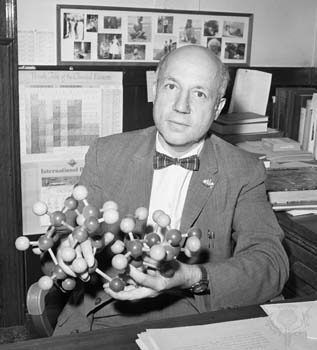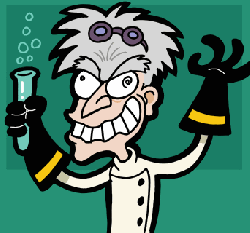
American chemist Melvin Calvin (1911-1997) did research that yielded important discoveries over broad areas of physical and biological chemistry, from metal-organic chemistry to the chemical origin of life.
Calvin Unforgettable And Respected Life
Melvin Calvin was born in St. Paul, Minnesota, on April 8, 1911, to Russian immigrant parents. He received his Ph.D. in chemical engineering from the University of Minnesota in 1935. His doctoral thesis concerned the electron affinity of iodine and bromide. A Rockefeller fellowship allowed Calvin the opportunity to do postdoctoral study at the University of Manchester, England, after which he joined the chemistry department of the University of California, Berkeley, in 1937, working as an instructor in chemistry before becoming a professor in 1947.
Organic Chemical Systems
At Berkeley, Calvin became interested in the structure and behavior of organic molecules, an interest that had been inspired by research on the catalytic reactions of the organic molecules involved in photosynthesis that he had undertaken while in England. He pursued his own studies in addition to his teaching duties, but was interrupted from both upon the United States entry into World War II. During the war, although he continued to teach, Calvin gave up his research to work for the National Defense Research Council and, later, as part of the Manhattan project charged with developing the atomic bomb, where he developed a process for procuring pure oxygen from the atmosphere that has since had significant peace-time applications for medical patients with breathing problems.
The Procces of Photosynthesis Leading to the Calvin Cycle
Working with his University of California associates, Calvin used the radioactive isotope carbon-14--which had become available to scientists in 1945--as a tracer for investigations of complex organic chemical systems. They described these tracer techniques in Isotopic Carbon (1949). In Calvin's research, chorella, a green algae, was suspended in water and then exposed to light. Then carbon dioxide consisting of carbon-14 was added. When the algae went through its life processes, producing carbohydrates from the carbon dioxide, water, and minerals, the presence of carbon-14 could be traced using a new research tool, paper chromatography. The series of compounds containing the radioactive carbon at different stages of photosynthesis were thus identified, and the biochemical mechanism of photosynthesis was mapped. These discoveries were described in The Path of Carbon in Photosynthesis (1957) and The Photosynthesis of Carbon Compounds (1962). Calvin's proposal that plants change light energy to chemical energy by transferring an electron in an organized array of pigment molecules and other substances was substantiated by research in his laboratory and elsewhere. Which later this discovery was known as the calvin cycle in the memory of Melvin Calvin.
The End of the Beloved and Cerished Life of Melvin Calvin
After retiring from the University of California, Calvin continued to be honored from his scientific peers, receving many medals for his accomplishments the he achived during his chemist years as well as the American Chemical Society's Priestlly Medal in 1978 and that organization's Oesper Prizes in 1981. He departed from this life of grace and achivements at the age of 85 on January 1, 1997, in Berkeley, California.
